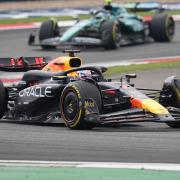
With the escalating climate crisis and Christmas impending, can extensive Christmas tree purchasing be justified? Or should we opt for the seemingly superior artificial alternative?
The Christmas festival cannot be regarded as a climate benefactor. It is, in fact, the opposite. As Christmas becomes increasingly commercialised, the waste it yields is amplified. With the accumulation of cards, wrapping paper, food and, of course, tree disposal, Christmas leaves landfills heaving.
Distressingly, 6 million or 250 tonnes of Christmas trees are discarded annually, despite the fact that they could be used for compost. The farming of the trees isn’t profoundly disastrous in itself, trees are farmed similarly to any other crop and oxygen is produced in the photosynthesis process. However, as with all farming, land must be cleared. Additionally, inefficient disposal of trees leads to decomposition in landfill which produces the potent greenhouse gas, methane. This can have detrimental impacts on the environment as it contributes to global warming through the greenhouse heating effect. A 6ft real tree that is placed in landfill may produce 16kg of carbon emissions.
Due to this, consumers have made the well-intentioned conversion to fake, plastic trees although these may be more destructive. Environmentalists and energy analysts have asserted that the manufacture of a fake tree involves the conversion of oil to plastic which constitutes two thirds of its carbon footprint. The rest is an accumulation of industrial emissions. An 6ft artificial tree has a carbon footprint of approximately 40kg.
Real trees that are recycled, have a negligible carbon footprint. They are therefore the most environmentally beneficial option, if disposed of correctly. Mike Childs, head of research at Friends of the Earth, stated “locally grown real trees are the best option”. This appears to be legitimate advice.



























